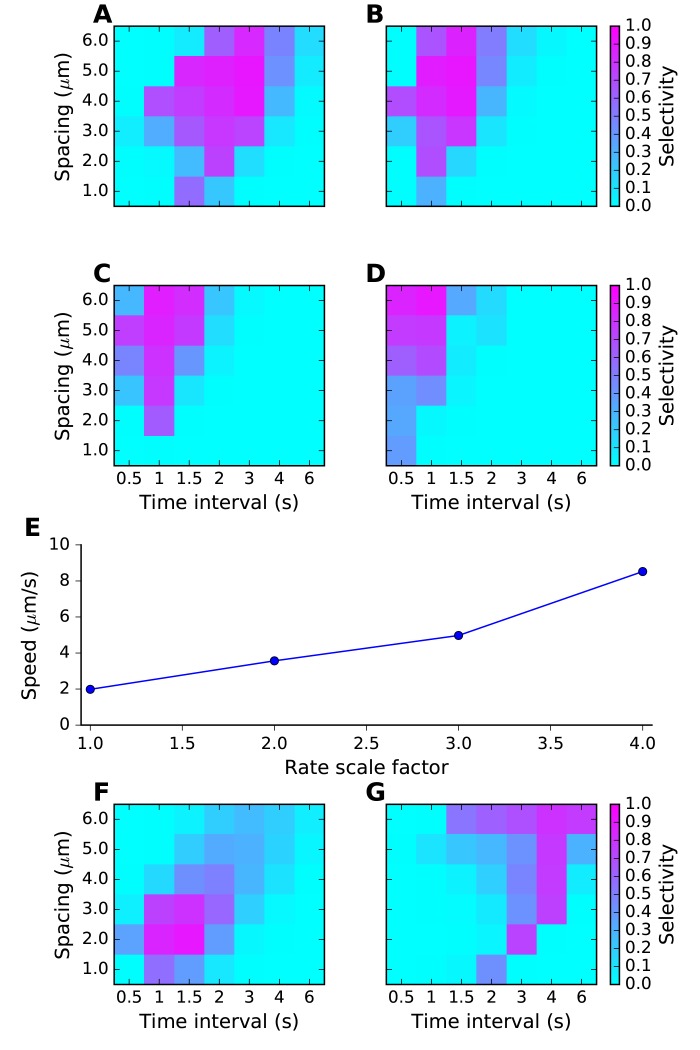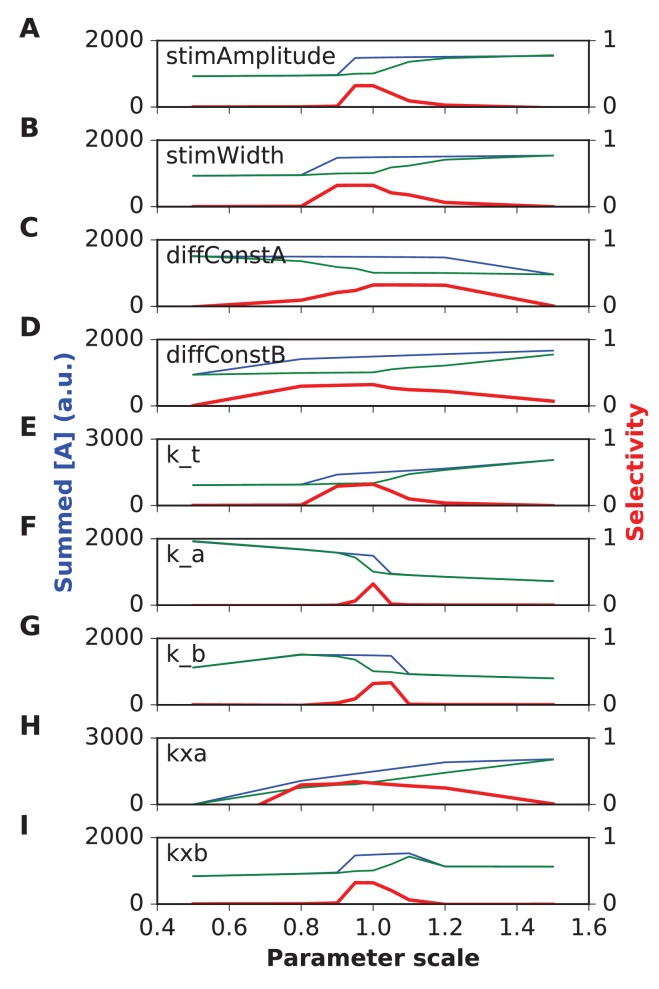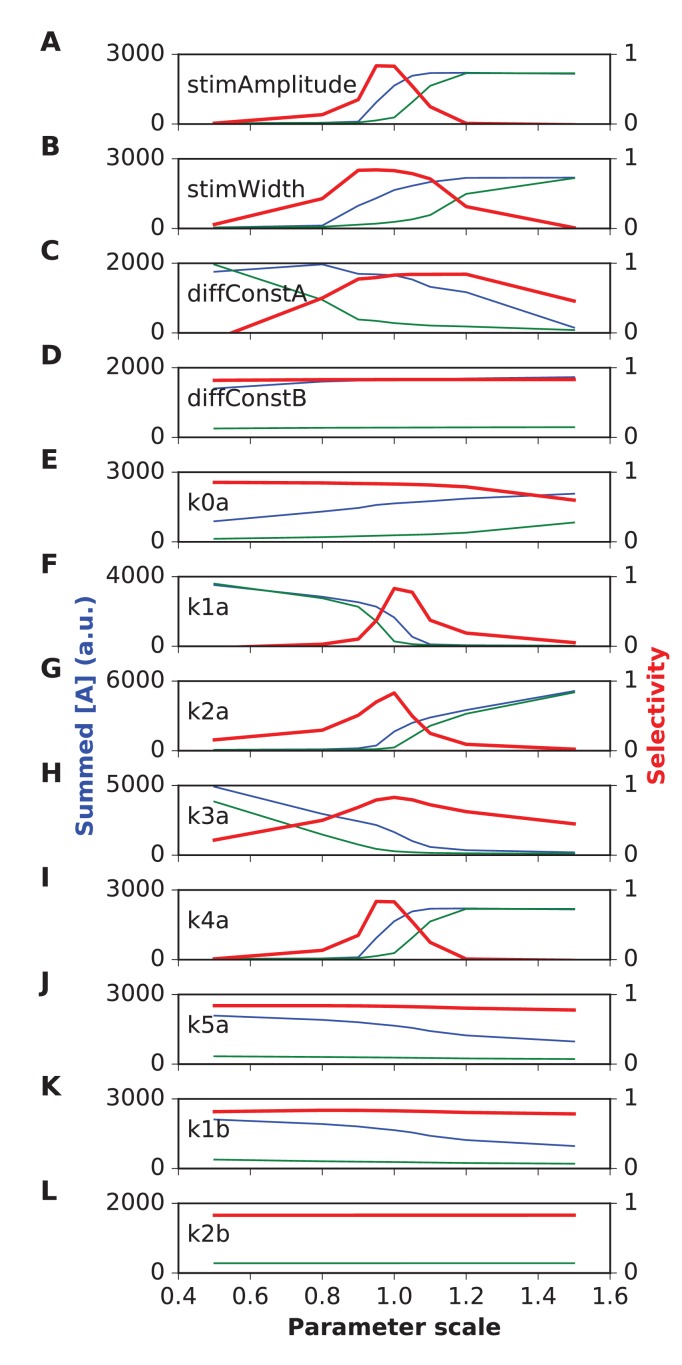In each plot, the blue trace is the summed concentration of A for the sequential stimulus, and the green plot is the mean of summed A over all permutations of the stimulus. A is summed over time since start of stimulus till end of simulation, and also summed over all five stimulus points. In each plot, the red trace is the selectivity metric (
Equation 3). Note that the selectivity is largest when the ratio of blue to green traces is largest. Because of the high baseline in the FHN model, as seen in the blue and green traces, the selectivity (red traces) remains under 0.5. In each plot the x axis is scale factor of selected parameter with respect to the default model. Panel (
A) Stimulus amplitude. (
B) stimulus width. (
C) Diffusion constant of molecule A. (
D) Diffusion constant of molecule B. (
E) rate constant for ‘t’ variable in FHN equations. (
F) rate constant a. (
G) rate constant b. (
H) Offset term for variable A. (
I) Offset term for variable B. Most parameters give good tuning for a range of ±10% around reference (1.0), but k_a is still more sensitive.



